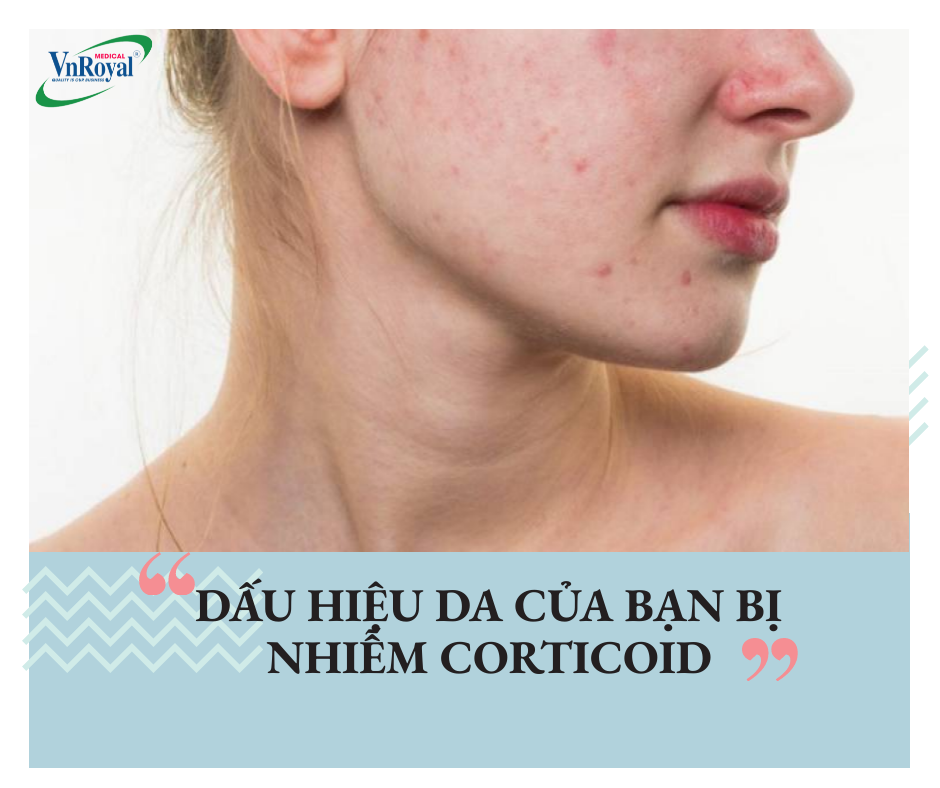1. What are corticoids?
Corticosteroids are man-made drugs that closely resemble cortisol, a hormone that your adrenal glands produce naturally. Corticosteroids are often referred to by the shortened term "steroids." Corticosteroids are different from the male hormone-related steroid compounds that some athletes abuse.

2. Signs your skin is infected with corticosteroids
Before stopping the topical corticosteroid, the skin is typically normal or near-normal, although localized itch, ‘resistant’ patches of eczema or prurigo-like nodules may be present.
- Redness (erythema or flushing) typically starts on the face, genital area, or other steroid-treated sites; in some cases, this may extend to untreated sites.
- Early in the flare, the skin can feel quite thickened. Swelling (oedema) and papules can occur.
- The usual symptom described by patients is burning and/or stinging. The itch may also be reported, especially once the redness starts to fade and the dry scaly (desquamative) phase begins. Patients often report skin sensitivity, including intolerance to moisturizers and environmental factors. Excessive sweating and itchy weals are a sign of recovery.
One of the difficulties is determining whether the skin reaction observed is due to the stopping of topical corticosteroids, or is simply a worsening of the underlying skin disease for which the topical steroids had been prescribed.
3. What is the treatment for topical corticosteroid withdrawal?
There is no agreed treatment for topical corticosteroid withdrawal, apart from ceasing the topical corticosteroid. However, whether this should be tapered or abrupt has not been determined. Japanese reports suggest there is minimal difference in the outcome, so recommend immediate cessation. A tapering course of oral steroids is helpful, as the addiction appears to relate only to the use of topical corticosteroids. Oral tetracyclines and low-dose isotretinoin have been used in steroid rosacea and perioral/periorificial dermatitis.
Supportive measures such as cold compresses and psychological support are often recommended. Prevention or treatment of secondary infection may require oral antibiotics.